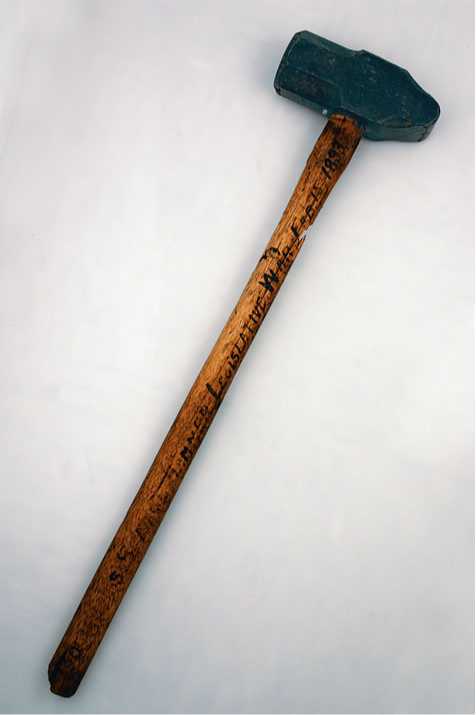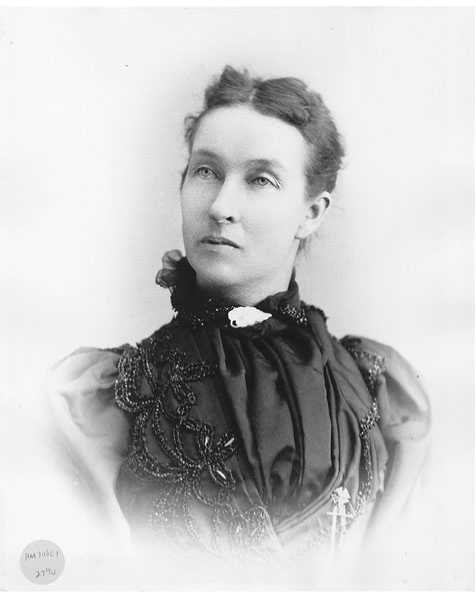The agricultural depression triggered a new outburst of farm radicalism, the Alliance movement. Alliances were organizations of farmers’ clubs, most of which had sprung up during the bad times of the late 1870s. The first Knights of Reliance group was founded in 1877 in Lampasas County, Texas. As the Farmers’ Alliance, this organization gradually expanded in northeastern Texas, and after 1885 it spread rapidly throughout the cotton states. Alliance leaders stressed cooperation. Their co-ops bought fertilizer and other supplies in bulk and sold them at fair prices to members. They sought to market their crops cooperatively but could not raise the necessary capital from banks, with the result that some of them began to question the workings of the American financial and monetary system. They became economic and social radicals in the process. A similar though less influential Alliance movement developed in the North.
Although the state alliances of the Dakotas and Kansas joined the Southern Alliance in 1889, for a time local prejudices and conflicting interests prevented the formation of a single national organization. But the farm groups emerged as a potent force in the 1890 elections.
In the South, Alliance-sponsored gubernatorial candidates won in Georgia, Tennessee, South Carolina, and Texas; eight southern legislatures fell under Alliance control, and forty-four representatives and three senators committed to Alliance objectives were sent to Washington. In the West, Alliance candidates

In Kansas in 1893 a Populist governor and a Populist-controlled Senate invalidated the election of some Republicans in the Kansas House of Representatives, giving the Populists control of that body, too. The displaced Republicans, denied seats, smashed their way into the capitol building with this sledgehammer and ousted the Populists, who decided to meet in a separate building. Each proclaimed itself to be the true legislature and passed its own laws. Eventually the Kansas Supreme Court decided in favor of the Republican legislature and disbanded the Populist gathering. Source: Kansas State Historical Society.
Swept Kansas, captured a majority in the Nebraska legislature, and accumulated enough seats in Minnesota and South Dakota to hold the balance of power between the major parties.
Such success, coupled with the reluctance of the Republicans and Democrats to make concessions to their demands, encouraged Alliance leaders to create a new national party. By uniting southern and western farmers, they succeeded in breaking the sectional barrier erected by the Civil War. If they could recruit industrial workers, perhaps a real political revolution could be accomplished. In February 1892, farm leaders, representatives of the Knights of Labor, and various professional reformers, some 800 in all, met at St. Louis. They organized the People’s (Populist) party, and issued a call for a national convention to meet at Omaha in July.

Mary Elizabeth Lease was a prominent Populist, noted for her rallying cry to "raise less corn and more hell.”
Source: Kansas State Historical Society.
That convention nominated General James B. Weaver of Iowa for president (with a one-legged Confederate veteran as his running mate) and drafted a platform that called for a graduated income tax and national ownership of railroads, the telegraph, and telephone systems. It also advocated a “subtreasury” plan that would permit farmers to keep nonperishable crops off the market when prices were low. Under this proposal the government would make loans in the form of greenbacks to farmers, secured by crops held in storage in federal warehouses. When prices rose, the farmers could sell their crops and repay the loans. To combat deflation further, the platform demanded the unlimited coinage of silver and an increase in the money supply “to no less than $50 per capita.”
To make the government more responsive to public opinion, the Populists urged the adoption of the initiative and referendum procedures and the election of U. S. senators by popular vote. To win the support of industrial workers, their platform denounced the use of Pinkerton detectives in labor disputes and backed the eight-hour day and the restriction of “undesirable” immigration.
The Populists saw themselves not as a persecuted minority but as a victimized majority betrayed by what would a century later be called the establishment. They were at most ambivalent about the free enterprise system, and they tended to attribute social and economic injustices not to built-in inequities in the system but to nefarious conspiracies organized by selfish interests in order to subvert the system.
The appearance of the new party was the most exciting and significant aspect of the presidential campaign of 1892, which saw Harrison and Cleveland refighting the election of 1888. The Populists put forth a host of colorful spellbinders: Tom Watson, a Georgia congressman whose temper was such that on one occasion he administered a beating to a local planter with the man’s own riding crop; William A. Peffer, a senator from Kansas whose long beard and grave demeanor gave him the look of a Hebrew prophet; “Sockless Jerry” Simpson of Kansas, unlettered but full of grassroots shrewdness and wit, a former Greenbacker, and an admirer of the single tax doctrine of Henry George; and Ignatius Donnelly, the “Minnesota Sage,” who claimed to be an authority on science, economics, and Shakespeare. (He believed that Francis Bacon wrote the plays.)
In the one-party South, Populist strategists sought to wean black farmers away from the ruling Democratic organization. Southern black farmers had their own Colored Farmers’ Alliance, and even before 1892 their leaders had worked closely with the white alliances. Nearly 100 black delegates had attended the Populist convention at St. Louis. Of course, the blacks would be useless to the party if they could not vote; therefore, white Populist leaders opposed the southern trend toward disfranchising African Americans and called for full civil rights for all.
The results proved disappointing. Tom Watson lost his seat in Congress, and Donnelly ran a poor third in the Minnesota gubernatorial race. The Populists did sweep Kansas. They elected numbers of local officials in other western states and cast over a million votes for General Weaver. But the effort to unite white and black farmers in the South failed miserably. Conservative Democrats, while continuing with considerable success to attract black voters, played on racial fears cruelly, insisting that the Populists sought to undermine white supremacy. Since most white Populists saw the alliance with blacks as at best a marriage of convenience, this argument had a deadly effect. Elsewhere, even in the old centers of the Granger movement, the party made no significant impression. Urban workers remained aloof.
By standing firmly for conservative financial policies, Cleveland attracted considerable Republican support and won a solid victory over Harrison in the electoral college, 277 to 145. Weaver received twenty-two electoral votes.
•••-[Read the Document Mary Elizabeth Lease, the Populist Crusader at Www. myhistorylab. com
•••-[Read the Document The People's Party Platform at Www. myhistorylab. com




 World History
World History









